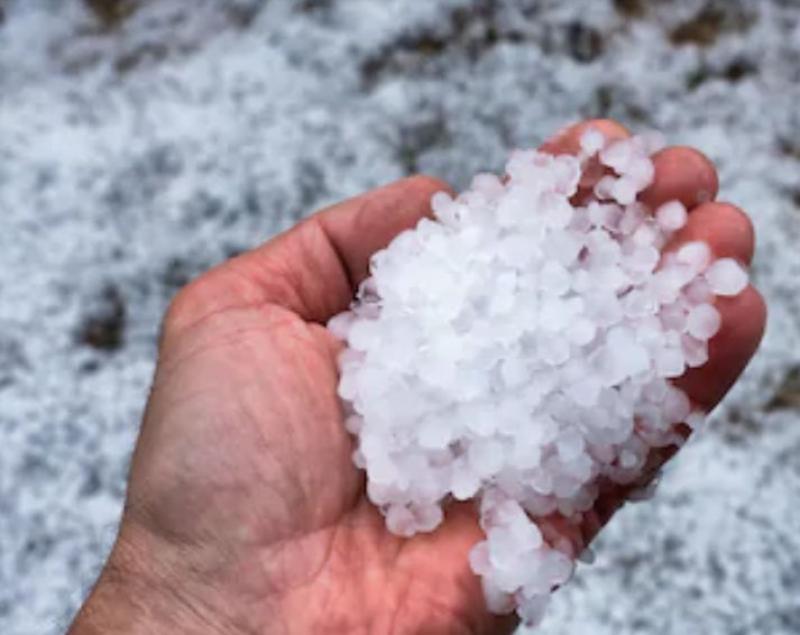How Hail Storms are Formed - Roofing Considerations
by Guest Post on Aug 30, 2020
Hail can wreak havoc on your home. Not only can it cause significant damage to your home’s roof, it can damage its gutters, which is also a major concern that can lead to other issues. According to the gutter specialists at Summit Roofing and Gutters, “Gutters provide protection from harmful components that may enter and damage the property.”
But have you ever wondered how hail storms are formed and when you have to worry about a hail storm in your area that may damage your home’s roof or gutters? Here are the answers you’re looking for.
How Are Hail Storms Formed?
Hail storms are formed when rainwater freezes. When raindrops are carried back into the sky by thunderstorms, sometimes they end up in particularly cold areas and turn to ice.
These frozen raindrops then collide with liquid rain and they grow larger. The longer they’re up there, the larger their potential for growth.
The hail storm finally occurs when the updraft of a thunderstorm becomes too weak, or the hail stones are too heavy.
When Do Hail Storms Occur?
It’s easy to assume that hail storms only occur in winter, due to the icy stones that are formed. What most people fail to realize is that the higher up you go, the colder it gets – just look at mountain climbers in summer, still decked out in winter-fitting gear.
There’s nowhere as high as way up in the clouds, where hail is formed.
Another factor you need for a hail storm to form is a thunderstorm — which typically happen in spring and summer. The most violent are fueled by heat in the atmosphere, so this makes sense.
So even though thunderstorms and hail storms can happen at any time, they most frequently occur in the height of summer.
Why Does Hail Come in Different Shapes and Sizes?
Wind whips hail stones through the cloud layers. As they fall lower, they begin to melt, Then they’re whipped back up into the higher parts of the clouds and freeze again.
The wind’s impact on the rapidly melting and refreezing hail stones can cause some disfigurations. This is only aided as the stones encounter more and more water, which hits and freezes at various angles. This can make the hail stones become lumpy or even jagged.
Size variation occurs depending on how much water the hail encounters as it whirls around in the clouds. Plus, some hail whirls around lower than other hail stones, giving it more time to melt before falling.
Lastly, some color differences may also occur depending on how fast the water freezes to the existing hail stones. If water freezes instantly, it creates a cloudy look. This is due to air bubbles being tracked inside the frozen hail. Slow-freezing hail will be clear, as the air bubbles have had time to escape.
All of these factors combined means hail can look different in color, shape and size.
Take a look at this hail size comparison to everyday objects from the National Weather Service.
|
Hail Size Comparison According to the National Weather Service |
|
|
Hail Diameter Size in Inches |
Comparison Object |
|
1/4 inch |
BB |
|
inch |
Dime |
|
3/4 inch |
Penny |
|
1 inch |
Quarter |
|
1-3/4 inches |
Golf ball |
|
2-1/2 inches |
Tennis Ball |
|
2-3/4 inches |
Baseball |
|
3.8 inches |
Softball |
|
4-3/4 inches |
DVD |
How Much Damage Can Hail Cause?
Basic, tiny hail won’t cause a lot of damage — except maybe a painful spot on your skin or two. However, the larger the hail is, the faster it falls, so the largest hail stones can cause monumental damage.
Being so hard and fast-falling, hail can easily damage anything left out to greet it. There’s plenty of recorded damage of it destroying crops, which is horrifying and extensive damage itself, but it can also target property.
Sometimes hail storms can cause upward of $1 billion in damage to property, including multiple buildings across a state.
How Can You Protect Your Home Against Hail?
Like with all natural disasters, there’s often very little we can do to prevent or halt them. Considering how much damage hail can do though, it’s always a good idea to make sure you’re as safe as you can be.
The most you can do is protect the most sensitive parts of your house. Your walls should be fine, but what about the windows and roof?
You should have your roof checked once or twice a year by a professional. You should also always have it checked after a significant storm.
You can also have glass windows and doors shielded against hail using roll-down or slide-over systems you can get installed. If you ever want to replace your windows, some models are impact-resistant, too.
Popular Articles
Three Places to Spend Money on the Exterior of Your Home
When you have the exterior of your home remodeled, you are investing, time, energy and convenience into the project and you want to make sure that...
95798 Views
Homemade Headboards-Make an Upholstered or Wooden Headboard
Homemade headboards can add a lot of personality to any bedroom. They can be coordinated with existing furniture and room decor or they can be the...
74457 Views
When to Use a Brush, Roller or Sponge Brush
Brushes are a good choice for painting trim and woodwork. They are also useful for cutting in the edges around the top and bottom edges and corners...
71822 Views
Creating a Cottage Kitchen with Bead Board
Kitchen decor can range from modern and bold to elegant and elaborate by using strategic kitchen pieces. One of the most popular decorating trends...
52900 Views
Gas Fireplace Diagnostics and Troubleshooting
Follow these steps for diagnosing and troubleshooting Gas Fireplaces repairs. For the average DIYer, this may seem intimidating, depending on the...
30640 Views
Latest Articles
How Much Does It Cost To Take A Bath?
Plumbers know that a bath may seem like a relaxing luxury, but the real cost extends far beyond your water bill. The average soak uses 35 to 50...
on Apr 8, 2025
10 Concrete Patio Ideas on a Budget
A concrete patio can be a game-changer for your outdoor space. It is durable, versatile, and can be customized to fit your style. But what if you...
on Mar 25, 2025
Tips for Creating a Stunning Personalized Photo on Canvas
Order the unique beauty of a personalized photo on canvas and bring your memories to life. With a customized photo on canvas, you can transform...
on Mar 7, 2025
Best Areas to Buy Property in Singapore for Long-Term Growth
Singapore's real estate market remains one of the most stable and lucrative in the world. With limited land supply, strong governmental...
on Feb 18, 2025
Troubleshooting Excess Water in Your HVAC Secondary Condensate Drain Pan
When maintaining your air conditioning system, it is easy to overlook the condensate drain pan - until excess water starts pooling in places where...
on Jan 12, 2025
Featured Articles
What Type of Licensed Contractor Should You Hire?
on Feb 28, 2017
Hire Contractors / Estimates

Looking for a specialty project? There are many types of contractors available for your home improvement needs. Finding the right type of...
Sponsored Articles
Best Areas to Buy Property in Singapore for Long-Term Growth
on Feb 18, 2025
Real Estate / Finance

Singapore's real estate market remains one of the most stable and lucrative in the world. With limited land supply, strong governmental...
Actions
Top Categories
- Garden / Landscaping / Patio — 264
- Kitchen / Bathrooms — 240
- Real Estate / Finance — 203
- Appliance / Repair — 186
- Interior Design / Decor — 184
- HVAC / Air Conditioning — 148
- Cleaning / Maintenance — 144
- Improvements / Remodeling — 131
- Plumbing / Basements — 118
- Floors / Tile / Hardwood — 116
- Doors / Garages — 113
- Safety / Security — 113
Articles Archive
More DIY Articles
Anyone for Tennis?
As the leaves fall and inclement weather returns, a game of tennis may be the last thing on your mind. However just imagine a lazy summer afternoon...
Alaska Local Builders Associations
Find a local builder or council, please contact the home builders' association (HBA) in your area.
Home Improvements That Can Help Sell a Home
With several cable channels devoted to home improvement, the industry has seen a boom in recent years. Many people are choosing to do renovations...
How to Clean Your Carpet and Protect Your Investment (Learn the Basics)
If you look at statistics, more than 50% of homes in the United States alone have carpet installed inside their homes. The purpose is actually...
The Benefits of Radio / Wireless Fire Alarm Systems
Early radio or wireless fire alarm systems began to gain a poor reputation for reliability, mainly related to the radio transmissions and battery...

